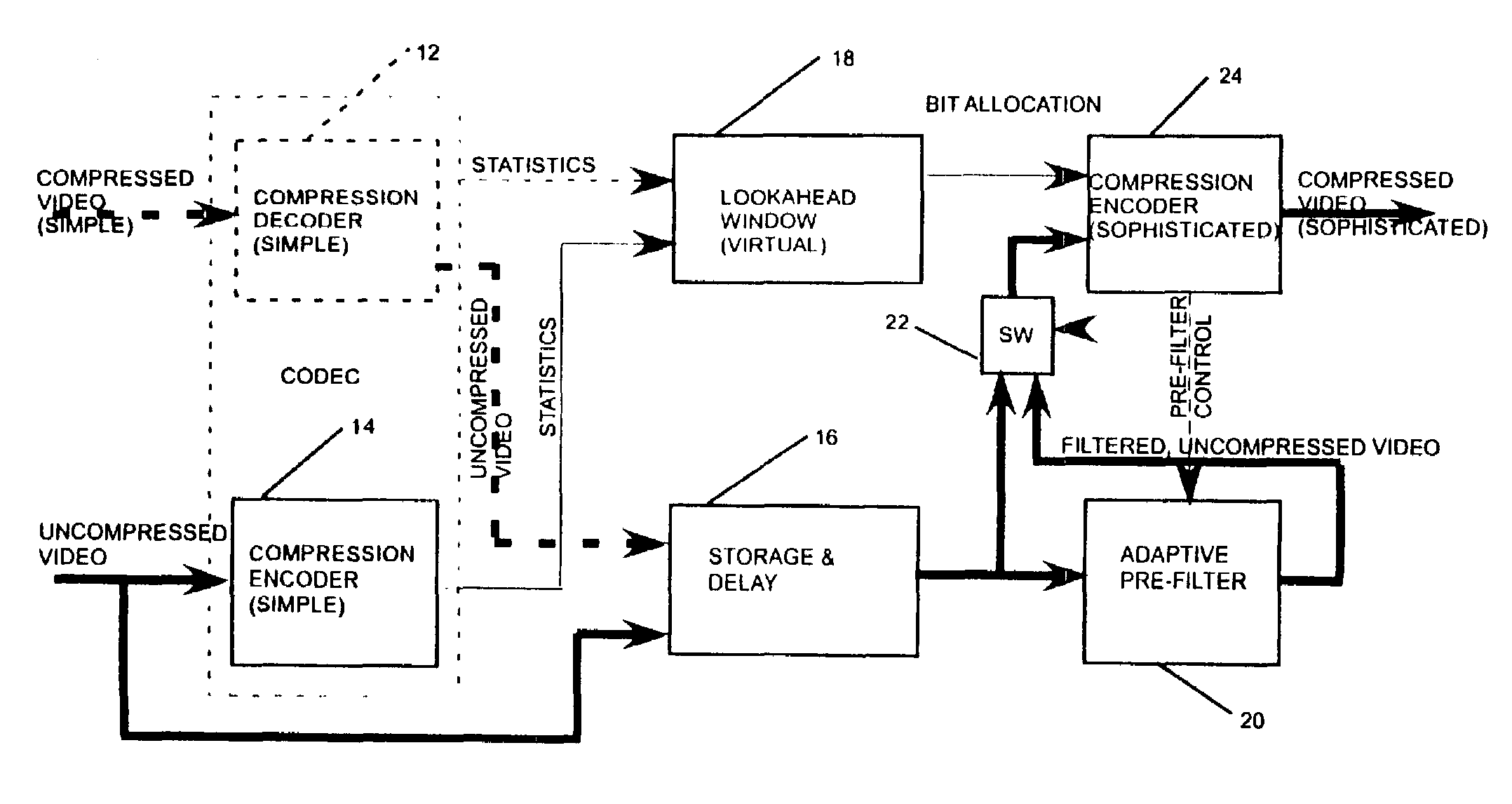Rate control with picture-based lookahead window
a lookahead window and rate control technology, applied in signal generators with optical-mechanical scanning, color televisions with bandwidth reduction, etc., can solve the problems of affecting the quality of video signals, so as to achieve reasonable bit allocation and improve quality.
- Summary
- Abstract
- Description
- Claims
- Application Information
AI Technical Summary
Benefits of technology
Problems solved by technology
Method used
Image
Examples
Embodiment Construction
[0010]Referring now to FIG. 1 an encoder / transcoder architecture is shown having a simple compression decoder 12 for receiving and decoding a compressed video stream encoded according to a simple compression standard, such as MPEG2, to produce an uncompressed video signal and related statistics. Alternatively a simple compression encoder 14 receives an uncompressed video stream to generate related statistics. The uncompressed video signal in either configuration (transcoder or encoder) is input to a storage and delay module 16, while the statistics are input to a lookahead window module 18 for processing by a rate control algorithm, described below. The lookahead window is a virtual concept that contains the statistics for each picture in the storage and delay module 16, for example, the number of bits for the picture, the picture type and the average quantization step size over all the macro-blocks for the picture. The uncompressed video stream from the storage and delay module 16 ...
PUM
 Login to View More
Login to View More Abstract
Description
Claims
Application Information
 Login to View More
Login to View More - R&D
- Intellectual Property
- Life Sciences
- Materials
- Tech Scout
- Unparalleled Data Quality
- Higher Quality Content
- 60% Fewer Hallucinations
Browse by: Latest US Patents, China's latest patents, Technical Efficacy Thesaurus, Application Domain, Technology Topic, Popular Technical Reports.
© 2025 PatSnap. All rights reserved.Legal|Privacy policy|Modern Slavery Act Transparency Statement|Sitemap|About US| Contact US: help@patsnap.com



